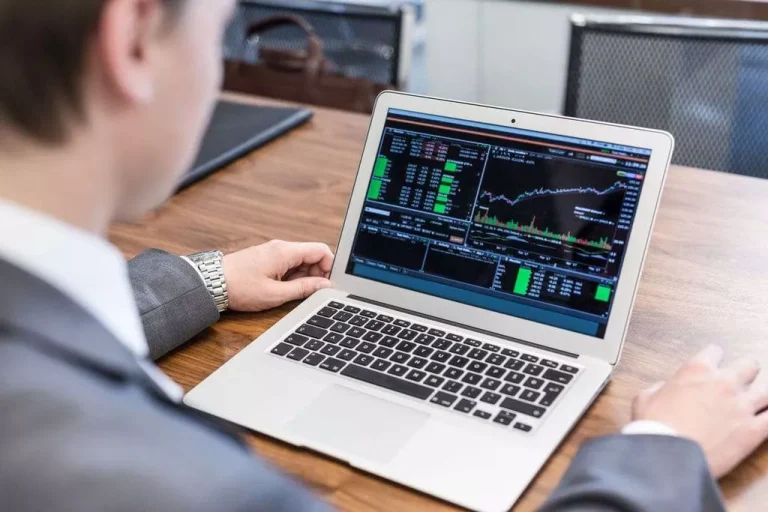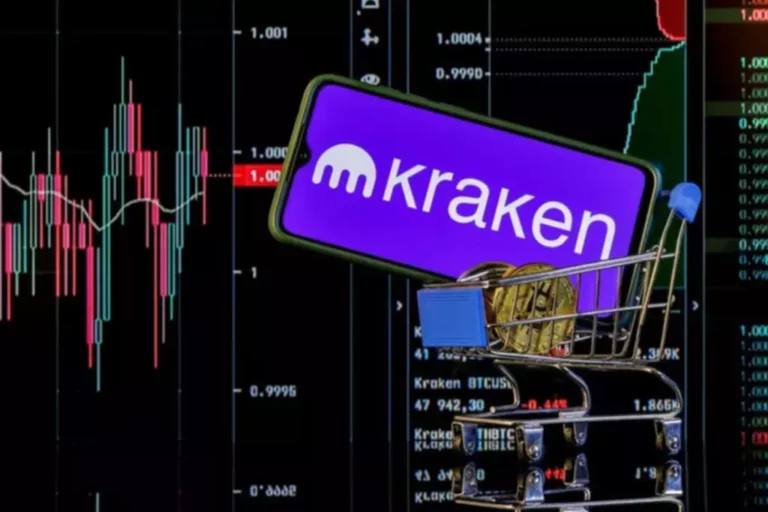Content
Prediction markets, also known as betting markets, information markets, decision markets, idea futures or event derivatives, are open markets that enable the prediction of specific outcomes using financial incentives. They are exchange-traded markets established for trading bets in the outcome of various events.[1] The market prices can indicate what the crowd thinks the probability of the event is. The most common form of a prediction market is a binary option market, which will expire at the price of https://www.xcritical.com/ 0 or 100%. Prediction markets can be thought of as belonging to the more general concept of crowdsourcing which is specially designed to aggregate information on particular topics of interest. The main purposes of prediction markets are eliciting aggregating beliefs over an unknown future outcome.
Augur is on its way. As a decentralized oracle and prediction market, Augur not only allows for the winnowing of truth…
However, centralized crypto exchanges are also getting into the prediction markets space in order to provide a one-stop financial what are prediction markets services platform spanning crypto trading, savings, and now, informed betting. In addition, while traditional prediction markets are managed by a central operator, trades in crypto prediction markets are self-executed via smart contracts to distribute payoffs. Traditional prediction markets like PredictIt and Kalshi use US dollars for the trading of outcomes and distribution of profits. Crypto prediction markets, also known as blockchain-based prediction markets, use crypto such as the stablecoin USDC to trade with. As the blockchain and Web3 industry matures, cryptocurrency continues to find new applications. Just as there are traditional stock exchanges and crypto exchanges, there are also traditional prediction markets (which have been around for decades) and crypto prediction markets.
Why are prediction markets necessary?
Besides, this is due to the heavy research conducted by the participants who bet for money. It also depicts the wisdom of the crowd, replicating the population’s behavior. Scale is a critical factor in the accuracy of prediction market outcomes; the Non-fungible token more individuals participate in the market, the more data there is, and the more accurate it becomes.

Move Beyond the Hype in AI Analytics

With individuals being financially incentivized to predict the outcome / decision most likely to find consensus among all stakeholders, solutions can reach consensus much more efficiently. This is because the fight for personal interests in a decision-making process gets balanced out by an economic self-interest of predicting a consensus-reaching alternative. This is basically “forcing” opposing parties by financial incentivization to discover the middle grounds instead of reaching this point through time- and ressource-intensive rope pulling. MYRIAD’s constant function ensures that the number of shares in a market’s liquidity pool always remains constant. When an imbalance is introduced by adding or removing shares to a liquidity pool, the price of outcomes on the market change, and shares are redistributed between the trader or liquidity provider, and the share pools. There are two main models for ensuring liquidity in a decentralized market; order books and automated market makers (AMMs).
FBI Warns iPhone, Android Users—Change WhatsApp, Facebook Messenger, Signal Apps
Augur, one of the first decentralized prediction markets, became infamous after traders began betting on the deaths of political figures, raising the possibility that it might become an „assassination market.“ A prediction market is a collection of people speculating on future events or outcomes. These events include (but are not limited to) elections, sales of a company, price fluctuations of commodities, even changes in the weather and just about any event or outcome that can be objectively verified ex post. Predictive analytics empowers energy and utilities companies to make informed, risk-reducing decisions, ultimately enhancing the reliability and safety of their operations. By analyzing historical equipment failures, companies preempt potential risks, enabling timely maintenance and replacement.
By considering various influencing factors such as patient history, socio-economic conditions, and treatment complexity, organizations can identify individuals who may be at higher risk of noncompliance. This proactive approach allows for targeted interventions, personalized support, and ultimately, improved patient outcomes. While AI excels at processing vast amounts of data, prediction markets celebrate the human touch—our sixth sense, our ability to read between the lines and our experience-based judgment. In these platforms, people bring a lifetime of experiences, beliefs and insights to bear on a variety of outcomes. Think of the countless scenarios in a business where predictions go beyond pure data analysis. For example, “A-tokens” could be priced at $65 while “B-token” trades at $35 This can be read as a 65% probability that Candidate A gets elected versus a 35% chance of Candidate B taking over the office.
For example, predictive forecasting can help predict the company’s revenue for the coming year based on the forecasted development of specific variables such as search queries, competitor prices and extraordinary events. Prediction markets thrive on collective human intuition, which incorporates context, emotion and cultural understanding—factors that AI often struggles to grasp. Here are some lessons from prediction markets that can be applied to business environments. Prediction markets don’t just capture data; they capture sentiment, creating spaces where people can explore and refine their understanding of current events. Whether it is the Cricket World Cup or fantasy football, fans around the world could predict several aspects of the game from player selection to individual scores, number of touchdowns and passes. However, given the propensity of participants to resort to illegal means for achieving profits, many countries have outlawed betting markets using real money or legal currency.
In prediction markets, traders bet on verifiable outcomes of events in specified timeframes. (Which movie will gross the biggest box office of 2024? Will this be the hottest year on record?) Questions are usually framed as yes-or-no propositions, for which traders can purchase „yes“ or „no“ shares. Each share pays $1 (or, in Polymarket’s case, the equivalent in crypto) if the prediction comes true, bupkis if not.
Launched in 1988, it has been used to forecast the results of presidential elections with greater accuracy than traditional opinion polls. Prediction markets are similar to futures markets for commodities or other financial asset prices. In futures markets, traders bid up or down the price of a future contract based on their expectation of what the future price of the underlying asset will be.
Predictive modeling techniques play a crucial role in various domains, enabling informed decision-making based on data-driven insights. From linear regression for continuous variable prediction to reinforcement learning for optimal decision-making, these models offer diverse solutions to real-world challenges. With this, it is essential to mention the surprising accuracy of predictions made by these markets. Often, these markets‘ social and political predictions have far bested the forecasts by experts.
Ultimately, the widespread adoption of prediction markets is really just a continuation of the broader shift toward decentralization and user-driven information sharing. Much like how social media empowered content creators to leverage the internet to become the media, prediction markets allow users to quantify and monetize the information they have access to. Polymarket is one of many prediction markets whose usage has exploded in the past year. While Polymarket remains technically illegal for U.S. residents, Kalshi operates a prediction market legally in the U.S. per an October appeals court decision.
Prediction markets can be used to create crowd-sourced forecasts, collecting predictions from dozens or hundreds of traders rather than a handful of experts. Traders „vote“ by placing bets on what they believe is the most likely outcome, thereby causing the price of that outcome to rise or fall. This market mechanism effectively turns the share price for each outcome into a crowdsourced estimate of that outcome’s probability.
- So what are decentralized prediction markets, and how do they differ from conventional prediction markets?
- Unlike traditional gambling, these platforms provide a structured, insight-driven environment where people’s intuition and calculated judgment can combine to shape a larger narrative.
- Since the late-1980s, Hanson has championed prediction markets as a way to aggregate information and thereby improve decision making by corporations and even governments.
- For example, if a share for one candidate in an election costs 63 cents, that candidate has a 63% chance of winning, according to this specific market.
- Healthcare companies harness the power of data analytics to delve into historical patient records and patterns.
Therefore, the visible growth of prediction markets in politics has garnered much attention. They have produced unexpectedly precise projections in close elections, surpassing traditional polling methods. Therefore, on the day of the election, the market settles on the actual outcome, with the shares in the winning candidate paying out at $1.00 per share and the shares in the losing candidate becoming worthless. Thus, traders who accurately predicted the outcome would receive a payout proportional to the number of shares they held in the winning outcome. As can be seen, the crowd consensus is that Bitcoin will not reach its all-time high in 2022, making “no” a safer bet with a maximum ROI of 3.19% and “yes” a riskier bet with a maximum ROI of 1,829%. So even in prediction markets, the usual investing principle applies–the higher the risk, the higher the potential reward.

„One of the advantages is that it’s 100% decentralized,“ said Joey Krug, who co-founded Augur in 2015. „If you’re building it, you’re effectively writing code. It’s effectively free speech, assuming you’re not taking a fee for yourself, and it’s also pretty flexible in the sense that anyone can kind of create a market on anything.“ Like many crypto founders – and even some successful tech founders – the 26-year-old Coplan also took what looks like a calculated risk in pushing the regulatory envelope. In mid-November, the FBI raided his New York home and confiscated his devices, reportedly as part of a Department of Justice investigation into whether Polymarket was operating illegally in the U.S.
Tableau is a well-known data visualization tool that comes with powerful predictive analytics capabilities. It simplifies data processing to make decision-making more efficient and offers time-series analysis, letting users perform predictive analytics, such as forecasting, within a visual analytics interface. Predictive analytics tools help hone your business operations, no matter your industry. Their wide-ranging capabilities help your business leverage data for decision-making, streamline operations, and foresee upcoming patterns with precision.
Schreibe einen Kommentar